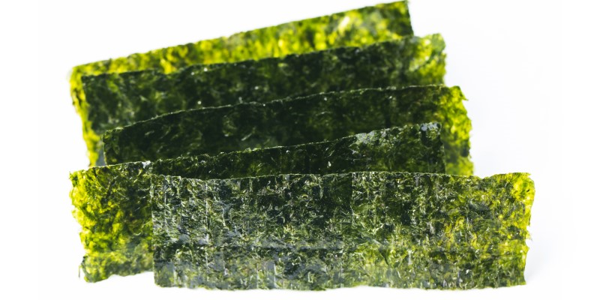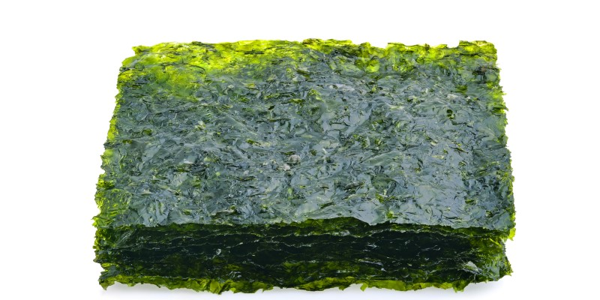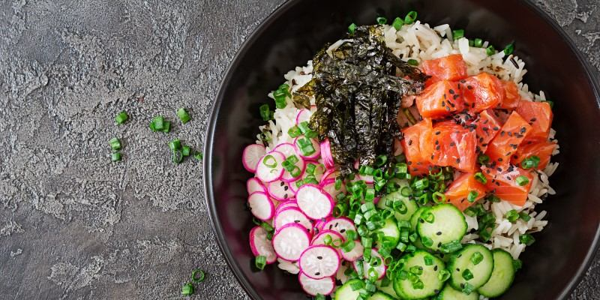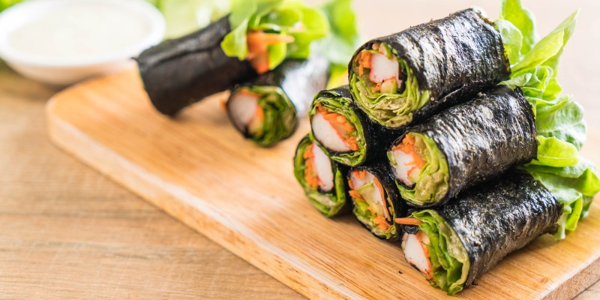Seaweed snacks are becoming increasingly popular, offering a healthy alternative to traditional chips and processed snacks. Their rise isn't just a fleeting trend but a growing part of global snacking culture. As more people seek nutrient-dense foods, seaweed has emerged as a critical player, offering numerous health benefits and a unique taste. But what exactly are seaweed snacks, and why are they gaining so much attention? This article will explore their nutritional profile and popularity and explain how to incorporate them into your diet.
What Are Seaweed Snacks?
Seaweed snacks, made from edible seaweeds like nori, wakame, and dulse, are dried, seasoned, and roasted or fried. They come in various forms, including crispy sheets, roasted strips, and crackers. Marketed as low-calorie and nutrient-rich, they offer flavours from simple sea salt to adventurous options like wasabi or teriyaki.
Types Of Seaweed Used In Snacks
Several types of seaweed are popular in snack production. Nori, commonly known as the seaweed used in sushi, is often found in snack form as roasted sheets. Wakame, another popular seaweed, is used in soups and salads but makes its way into snack products. Dulse is a red seaweed with a slightly chewy texture and a salty taste, making it a favourite snack. These different types of seaweed bring unique flavours and textures, contributing to the snack's broad appeal.

The Nutritional Benefits Of Seaweed
Seaweed isn't just a tasty snack; it's also packed with essential nutrients. Despite its low-calorie content, seaweed is incredibly nutrient-dense, making it a perfect choice for those looking to snack more healthily. Let's dive into some of the key nutritional benefits.
Rich In Iodine
One of the standout nutrients in seaweed is iodine. This essential mineral is vital for maintaining proper thyroid function, which regulates metabolism. Many people don't get enough iodine in their diet, and seaweed snacks provide an easy way to boost intake. Iodine deficiency can lead to fatigue, weight gain, and cognitive issues, making seaweed an essential addition to a balanced diet.
High In Antioxidants
Seaweed is rich in antioxidants, particularly carotenoids and flavonoids. These compounds guard your cells against unfastened radical damage, which can also decrease the hazard of continual illnesses, including cancers and coronary heart disease. Some types of seaweed, such as brown algae, also contain a compound called fucoxanthin, which has been studied for its potential anti-inflammatory and fat-burning properties.
Source Of Vitamins And Minerals
Seaweed is a good source of vitamins A, C, and E, along with various B vitamins, including B12. This is particularly beneficial for those following plant-based diets, as B12 is typically found in animal products. Seaweed also contains essential minerals such as calcium, magnesium, potassium, and iron, which support overall health.
Omega-3 Fatty Acids
Although fish are often considered the primary source of omega-3s, these essential fatty acids originate from the algae that fish consume. Seaweed is a plant-primarily based total supply of omega-3s, crucial for mind function, coronary heart health, and lowering irritation inside the body.

Why Seaweed Snacks Are Gaining Popularity
Seaweed snacks have risen in popularity for several reasons, from their nutritional profile to their eco-friendly nature. Here’s a closer look at why they’re becoming a mainstay in many households.
Health Trends And Conscious Eating
With the growing focus on health and wellness, people actively seek snacks that align with their dietary goals. Seaweed snacks, which are nutrient-rich and low in calories, fit perfectly into diets focused on clean eating, weight management, and overall wellness. Seaweed snacks offer a balanced, nutrient-dense alternative for those looking to reduce their intake of processed snacks or seeking more plant-based options.

Sustainability And Environmental Impact
Another driving factor behind the popularity of seaweed snacks is the growing concern over environmental sustainability. Seaweed farming has a low ecological footprint, requiring no fertilizers or fresh water, and it absorbs carbon dioxide, helping to lessen greenhouse gas emissions. As consumers become more aware of the environmental impact of their food choices, seaweed, as an eco-friendly option, gains favour.
Global Influence And Culinary Trends
Seaweed has long been a staple in Asian cuisine, and as global tastes have become more adventurous, the Western world has embraced this versatile ingredient. Its integration into sushi, soups, and salads has paved the way for its emergence as a popular snack food. The growing trend of fusion cuisine has also contributed to seaweed's newfound popularity, as it easily blends with both Eastern and Western flavour profiles.
Incorporating Seaweed Snacks Into Your Diet
Seaweed snacks aren’t just for eating straight out of the package. There are numerous creative ways to integrate them into your meals, adding a nutritious boost to everyday dishes.
As A Topping For Salads And Bowls
Crumbling seaweed snacks over salads or grain bowls can add a salty, crunchy texture to your dish and boost minerals and vitamins. Pairing them with vegetables, grains, and proteins creates a balanced meal packed with nutrients.

A Flavorful Garnish For Soups And Stir-Fries
Seaweed snacks can be used as a garnish for soups, especially Asian-inspired dishes like miso soup or ramen. They can also be stirred into stir-fries or sautéed with vegetables for a quick, nutrient-dense meal. Seaweed's savoury taste, often described as "umami," enhances the overall flavour of these dishes.
Substitute For Chips
For those who crave the crunch of traditional chips but want a healthier option, seaweed snacks serve as a perfect alternative. Their crispy texture and salty flavour can satisfy cravings while providing added nutritional benefits. They pair well with dips like hummus, guacamole, or even salsa, making them a versatile snack.
Wraps And Rolls
Seaweed snacks can also substitute traditional wraps in sushi rolls, wraps, or sandwiches. Place your desired filling—like avocado, cucumber, or smoked salmon—on the seaweed snack, roll it up, and enjoy a healthy, handheld meal.

Conclusion
Seaweed snacks have proven themselves as more than just a passing trend. Their nutrient-packed profile, sustainability, and versatility make them a snack option here to stay.
Whether you're looking to boost your iodine intake, add more antioxidants to your diet, or try something new, seaweed snacks offer a delicious and nutritious solution. As more people become health-conscious and eco-aware, it's clear that seaweed snacks are set to become a staple in healthy snacking.
-
How to Create a Pet-Friendly Backyard: Top 10 Ideas
Hey there, pet lovers! If you're like me, you consider your furry friends part of the family. So, why not make your backyard a paradise for them? Creating a pet-friendly backyard doesn't have to be a complicated affair. It can be a lot of fun! So, let's jump right into the top 10 ideas to transform your outdoor space into a haven for your beloved pets.
-
The Top 10 Most Unusual Animal Beauty Pageants
Beauty pageants aren't just for humans anymore! In the wild world of animals, some creatures are also strutting in unique beauty pageants that celebrate their remarkable features and characteristics. From fuzzy to feathery and from tiny to towering, these unusual animal beauty pageants showcase the stunning diversity of the animal kingdom.
-
Where to Procure Affordable Bridal Fashion
Planning a nuptial can be an exhilarating yet fiscally exigent endeavour. One of the most significant expenditures often lies in the bridal attire. However, acquiring affordable wedding dresses that maintain elegance and quality is feasible. This guide will assist you in navigating the best places to find budget bridal fashion and inexpensive bridal gowns that will make you look resplendent on your momentous day without depleting your finances.